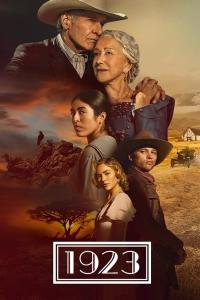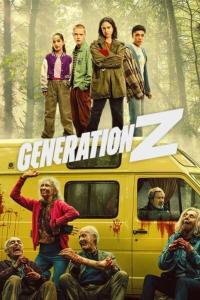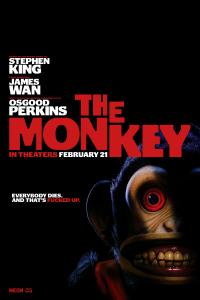Torrent details for "The Great Courses | The Art of Storytelling: From Parents to Professionals [FCO]" Log in to bookmark
Controls:
Language:
 English
EnglishTotal Size:
515.26 MB
Info Hash:
e7d6d2d4e496bba5e7b722d52edd25c27186a851
Added By:
Added:
13-01-2020 15:11
Views:
738
Health:

Seeds:
3
Leechers:
0
Completed:
382
For Developer Tools & Apps >>> https://ftuapps.com/
Forum for discussion >>> https://1hack.us/

Audible Course
Author: Instructor Hannah B. Harvey, Ph.D. - Professional Storyteller
Language: English
Released: 2019
Duration: Average 31 minutes each
Lectures: 24 (Mp3)
Torrent Contains: 29 Files, 1 Folders
Course Source: https://www.thegreatcourses.com/courses/the-art-of-storytelling-from-parents-to-professionals.html
Overview:
The gift of storytelling may be one of life's most powerful—and envied—skills. A story well told can make us laugh, weep, swell with pride, or rise with indignation. A story poorly told can be not just boring or uncomfortable, but positively painful to experience. Humans seem to be fundamentally hard-wired for stories—they’re how we record both the monumental events of life and the small, everyday moments.
The oral storytelling tradition is as old as language itself. Throughout history, stories have primarily existed in the verbal realm, preserving and passing knowledge across generations before being canonized in print. This was true of the ancient epics, and it’s true today. Your family history, your company’s history, the stories you tell that define and shape your identity—these are all stored in your mind and shared through your actions and words.
And being a gifted storyteller has its advantages: A well-crafted narrative can keep the people, values, and life lessons you hold dear alive and give you the power to influence your children, your employees, and others.
There are many reasons we relate and respond to stories. We’re often drawn to
• what or whom the story represents;
• how the story reflects a core part of who we are (or who we want to be); and
• what the story could be—because we don’t like the reality of what the story is.
So how do you tell stories that stick—in your own mind and in the minds of your family, friends, colleagues, and clients?
That’s precisely what you’ll learn in The Art of Storytelling: From Parents to Professionals, an enthralling course that reveals the tried-and-true methods experienced storytellers use to develop and tell engaging, entertaining, and memorable tales. In 24 lectures, Professor Hannah B. Harvey demonstrates how to master the art form’s basic principles with the same witty, dynamic energy that has made her an internationally recognized professional storyteller and award-winning educator.
Even if you never plan to set foot on a stage, knowing what a professional storyteller does in the process of crafting and delivering a tale allows you to enhance the stories you tell everyday—to your children at bedtime, in your conversational anecdotes, and in your presentations at work. Teachers, lawyers, clergy, coaches, parents, and anyone who wants to understand the power of stories to capture hearts and minds will benefit from the lessons presented in this course.
Find Your Own Story
Professor Harvey calls the act of creating a story performance an “alchemical process” that involves an interconnected cycle of talking, writing, imaging, playing, and rehearsing.
You’ll begin your exploration of this layered chain of events by breaking down storytelling’s secret underpinnings and examining the dynamic relationship between you, the story, and the audience, known as “the storytelling triangle.”
This course introduces you to practical methods for building dynamic tension and capturing—then maintaining—your audience’s attention. You’ll acquire tips and techniques for finding, selecting, and preparing stories, whether they’re based on your own experiences, time-honored folk tales, or beloved family yarns.
You may be surprised to discover how many small, virtually imperceptible decisions go into the telling of a good story, right down to the way you emphasize certain words. For example, a far richer picture is painted when you say “the door creeeeeeeeaked open,” instead of stating “the door creaked open.” That’s because the former enhances “sensorium,” allowing the audience to fully visualize what you’re describing.
You’ll also learn to
• choose expressive language;
• craft compelling characters;
• refine your narrator’s point of view;
• shape your story’s plot, structure, and emotional arc;
• develop imagery, vocal cues, and intonation; and
• use body language to connect with your audience.
And there’s so much more. Professor Harvey instructs you on ways to make the past feel present, to take “on and off ramps” to gracefully enter and exit stories, and to employ devices such as repetition and audience participation to lure back listeners you’ve started to lose.
Beyond Happily Ever After
Part how-to workshop, part intellectual study of the history of narrative, The Art of Storytelling investigates the hidden meanings of various genres from the hero’s journey to the fairy tale. You’ll examine classic story structures, archetypal characters, and why certain stories, such as Cinderella, have endured across time and cultures.
In studying the psychology of fairy tales you’ll discover that, although they were never intended for children, their characters and situations serve as a mirror in which children see themselves reflected. As you dissect the familiar story of Little Red Riding Hood to examine the themes of temptation, heroism, good, and evil, you’ll realize how real the fantasy world can seem for children and the many ways fairy tales fulfill children’s needs.
Fairy tales offer children reassurance that
• their feelings are valid;
• although they struggle with contradictory desires, it will all turn out OK in the end; and
• if they “enter the woods,” they can overcome the temptations that the woods represents.
Practice Makes (Almost) Perfect
Many lectures feature exercises that literally get you moving to develop your stories and make them more enjoyable for you to tell and your audience to hear. Although journaling and scripting are part of the process, at no point will you be expected to memorize your stories word for word. The professor’s interactive activities and “side coaching” sessions are designed to make you comfortable enough with your story to tell it naturally and make impromptu changes as needed.
For the uninitiated, some exercises may seem outside your comfort zone, but you’ll soon find that Professor Harvey’s warm-ups, activities, and rehearsal ideas are an effective way to harness performance anxiety and get prepared to be playful and spontaneous.
While you may not do this preliminary work when telling stories at a party, doing the exercises ahead of time will help tremendously when you’re thinking on your feet.
In taking this course, you’ll learn that storytelling is less about the telling than it is about listening to what your particular audience needs, and reacting in the moment by adapting your language, body gestures, and voice to accommodate the changing dynamics and atmosphere.
You’ll even learn what to do if the unexpected occurs while telling a story to a roomful of kids or giving a presentation (such as sirens blaring outside). Lectures addressing the practical considerations of using props, PowerPoint, and microphones in various scenarios are as informative for performers as they are for business professionals.
An Unforgettable Experience
An absolute treat for the heart and mind, this course is complemented by clips of accomplished storytellers practicing their craft at festivals, as well as Professor Harvey’s own personal tales about growing up in Appalachia, which range from the heartfelt to the downright hilarious.
An exceptionally captivating lecturer, she brings her unique perspective as a scholar-artist to this endeavor, grabbing hold of your attention from the start and never letting go—which is exactly what you’ll learn to do with your own audience by the end of this course.
Whether you seek to sharpen your abilities in the boardroom, the classroom, or simply around the water cooler, The Art of Storytelling has the answer. The context may change, but the methods remain the same.
What Will You Learn?
• Learn how to build dynamic tension and capture - then maintain - your audience's attention.
• Discover how to apply expressive language, imagery, vocal cues, and intonation to the stories you tell.
• Try your hand at numerous exercises designed to help develop your stories and make them more enjoyable.
• Acquire techniques for finding, selecting, and preparing stories based on your own experiences - or beloved family yarns.
• Examine different methods of shaping your story's plot, structure, and emotional arc.
• Analyze the Storytelling Triangle" - the dynamic relationship between the storyteller, the story, and the audience."












































